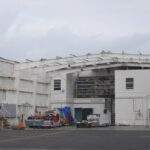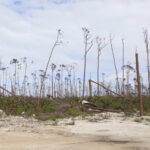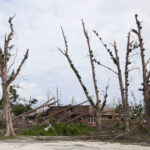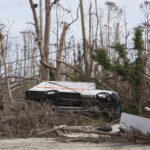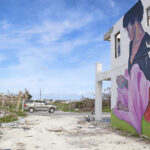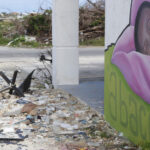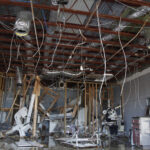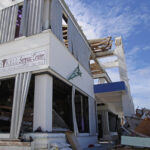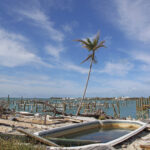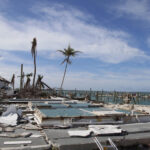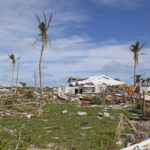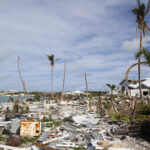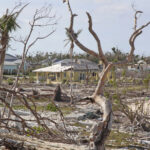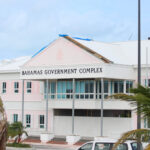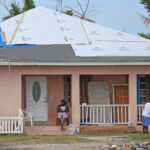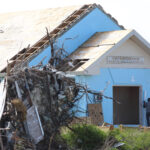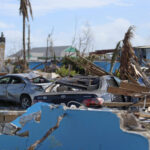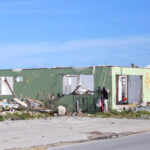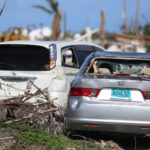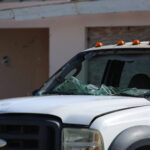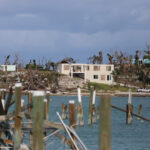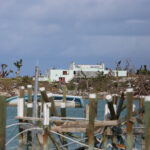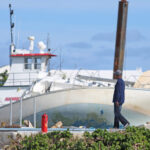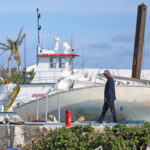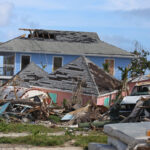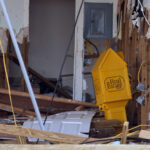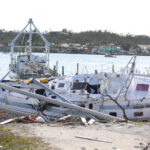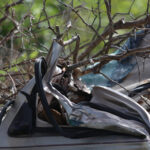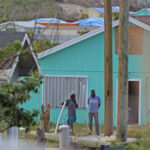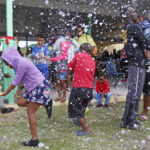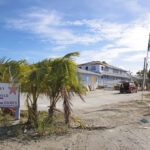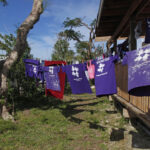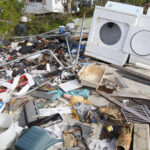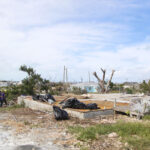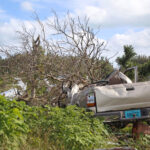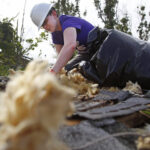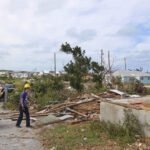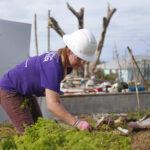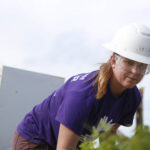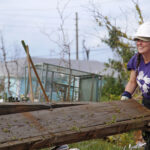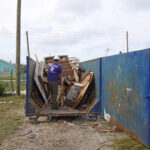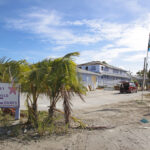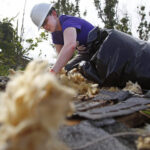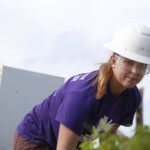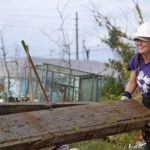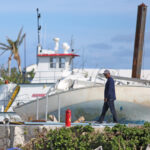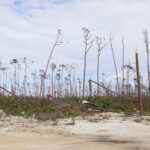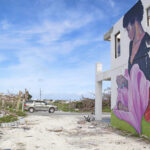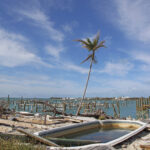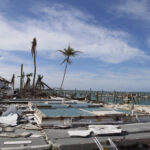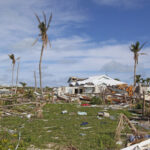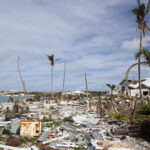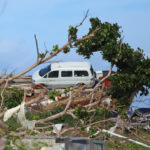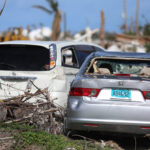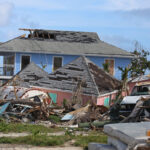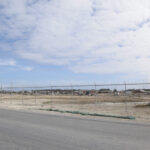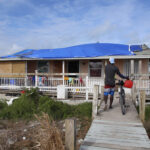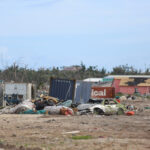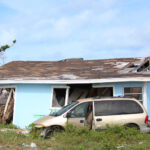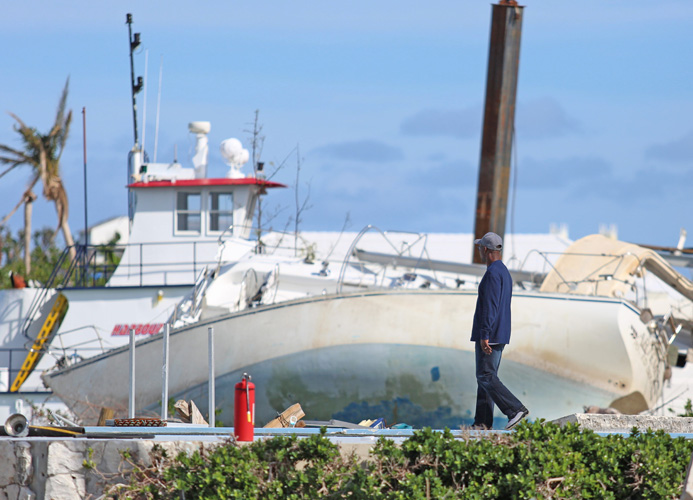
EN ROUTE TO ABACO ISLANDS – Cruising at 7,000 feet in his 1972 Piper Cherokee 6 stuffed with relief supplies, pilot Randy Brennan spots a familiar patch of land down below in the turquoise and azure Atlantic.
Less than 150 miles from Vero Beach, the Bahamian islands that have been a playground for Floridians for generations can be seen strung out like jewels on the horizon.
From a distance, all seems calm and beautiful. But as we descend, it becomes clear the islands are still engaged in a desperate struggle to recover from Hurricane Dorian, a Cat 5 storm that hovered over the northern Bahamas for days.
On the ground in Marsh Harbour, a town familiar to many Vero residents, the remnants of the natural disaster are beyond belief. For a first-time visitor, it seems as if time has stood still since the monster storm shredded infrastructure, destroyed homes and schools and killed scores of islanders.
Windshields of cars are blown out and pine trees have been snapped like twigs. Tarps function as shelters and residents’ belongings – or pieces of them – remain scattered across recently cleared dirt roads.
Brennan knows Marsh Harbour well. The Vero Beach attorney has been flying to the town for six years to assist Youth on a Mission, a ministry of St. Helen’s Catholic Church. The service-based ministry had a strong presence in Marsh Harbour prior to the hurricane, working to support Every Child Counts, a school of about 100 children with developmental and physical disabilities.
Today, the school serves as “base camp” for recovery volunteers.
“The damage in Marsh Harbour was eye-opening,” Brennan said. “If a storm like that is coming toward Vero Beach, people can leave. There? Where do you go? You’re on an island in the middle of the ocean. There is no place to evacuate to, and there is very little high ground on Abaco.”
Matt McAlarnen, a Youth on a Mission board member and ministry volunteer at St. Helen’s Church, recalls how in the days after the disaster Brennan and Richard Schlitt, director of Youth on a Mission, were “like Amazon Prime,” rounding up and delivering emergency relief supplies to Marsh Harbour.
He says relief organizations would call from the island asking for specific supplies “and the next day it would be delivered.”
The two Vero Beach residents were able to deliver supplies in a fraction of the time that a barge would take. With the help of 11 volunteers and a DC-3, they were able to set up a base camp to accommodate 40-50 volunteers at a time for the months and years of recovery still ahead.
For Maureen Leu, another Youth on a Mission board member and early volunteer, the first trip back to the area following the catastrophe was difficult.
“I thought going over in September would somehow ease my mind,” Leu recalls. “But, for me, it was almost worse because you didn’t know where the kids were.”
At that time, some of the students at Every Child Counts school were still unaccounted for.
“Our trips have always largely been about the kids,” Leu said. “So, not to have them around the church or show up at the common places was really, really hard.”
Much of the infrastructure in Marsh Harbour – once the commercial center of the Abacos – is still shattered and there is a continuing need for construction materials and other relief supplies. As winter continues, islanders need blankets.
“People don’t think of the Bahamas as getting cold, but it does get cool at night and a lot of people are without shelter,” Maureen Leu said.
The Bahamian government is waving duties on incoming relief supplies, but that will stop in June, and Youth on a Mission board members are urging Vero residents to donate as much as they can before the summer to avoid having relief funds eaten up by customs fees.
Photos by: Kaila Jones
Click HERE to see more or buy photos
- Jason Quashie, minister of South Abaco Church of Christ, walks amongst the rubble following hurricane Dorian Dec. 21, 2019.
- Jason Quashie, minister of South Abaco Church of Christ, walks amongst the rubble following hurricane Dorian Dec. 21, 2019.
- Erin, a volunteer for All Hands and Hearts from Massachusetts, spends her Christmas break in Marsh Harbour helping with relief efforts following Hurricane Dorian Dec. 21, 2019. “This is the best possible vacation for me,” Erin said. “I get to use my hands, and I don’t have to think.”
- Corynn Benoit, from Salt Lake, Utah, volunteers for All Hands and Hearts in Marsh Harbour.
- Corynn Benoit, from Salt Lake, Utah, volunteers for All Hands and Hearts in Marsh Harbour.
- Chelsea Reedy, from Salt Lake, Utah, volunteers for All Hands and Hearts in Marsh Harbour.
- Erin, a volunteer for All Hands and Hearts from Massachusetts, spends her Christmas break in Marsh Harbour helping with relief efforts following Hurricane Dorian Dec. 21, 2019. “This is the best possible vacation for me,” Erin said. “I get to use my hands, and I don’t have to think.”
- Corynn Benoit, from Salt Lake, Utah, volunteers for All Hands and Hearts in Marsh Harbour.
- Chelsea Reedy, from Salt Lake, Utah, volunteers for All Hands and Hearts in Marsh Harbour.
- Local families play in artificial snow during a Christmas Event at Central Abaco Primary School in Marsh Harbour Dec. 21, 2019.
- Local families play in artificial snow during a Christmas Event at Central Abaco Primary School in Marsh Harbour Dec. 21, 2019.
- Jason Quashie, minister of South Abaco Church of Christ, walks amongst the rubble following hurricane Dorian Dec. 21, 2019.
- Bahamian Pine Trees snapped like twigs Dec. 21, 2019
- A stretch of restaurants and marinas are shown destroyed Dec. 21, 2019, just four months after Hurricane Dorian made land fall on Marsh Harbour.[Kaila Jones/ 32963]
- A stretch of restaurants and marinas are shown destroyed Dec. 21, 2019, just four months after Hurricane Dorian made land fall on Marsh Harbour.[Kaila Jones/ 32963]
- A stretch of restaurants and marinas are shown destroyed Dec. 21, 2019, just four months after Hurricane Dorian made land fall on Marsh Harbour.[Kaila Jones/ 32963]
- A stretch of restaurants and marinas are shown destroyed Dec. 21, 2019, just four months after Hurricane Dorian made land fall on Marsh Harbour.[Kaila Jones/ 32963]
- A stretch of restaurants and marinas are shown destroyed Dec. 21, 2019, just four months after Hurricane Dorian made land fall on Marsh Harbour.[Kaila Jones/ 32963]
- Aerial photo showing what is left of the Haitian Shantytowns, the Mudd and Pigeon Pea Dec. 21, 2019.
- What is left of the shantytown of the Mudd and Pigeon Pea. Today, the Bahamian government cleared out the area and placed a barbed wire fence to keep those who once called the area home out of the area.[Kaila Jones/32963]
- A Bahamian resident returns home with a plastic gas canister for his families generator across from what was once the shantytown of the Mudd and Pigeon Pea. Today, the Bahamian government cleared out the area and placed a barbed wire fence to keep those who once called the area home out of the area.[Kaila Jones/32963]
- What is left of the shantytown of the Mudd and Pigeon Pea. Today, the Bahamian government cleared out the area and placed a barbed wire fence to keep those who once called the area home out of the area.[Kaila Jones/32963]
- What is left of the shantytown of the Mudd and Pigeon Pea. Today, the Bahamian government cleared out the area and placed a barbed wire fence to keep those who once called the area home out of the area.[Kaila Jones/32963]

